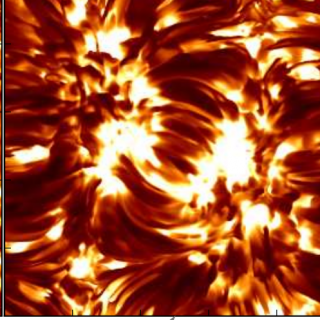Bibcode
Chen, Hechao; Tian, Hui; Li, Hao; Wang, Jianguo; Lu, Hongpeng; Xu, Yu; Hou, Zhenyong; Wu, Yuchuan
Referencia bibliográfica
The Astrophysical Journal
Fecha de publicación:
7
2022
Revista
Número de citas
37
Número de citas referidas
31
Descripción
Stellar flares are characterized by sudden enhancement of electromagnetic radiation from the atmospheres of stars. Compared to their solar counterparts, our knowledge on the coronal plasma dynamics of stellar flares and their connection to coronal mass ejections remains very limited. With time-resolved high-resolution spectroscopic observations from the Chandra X-ray Observatory, we detected noticeable coronal plasma flows during several stellar flares on a nearby dMe star EV Lac. In the observed spectra of O VIII (3 MK), Fe XVII (6 MK), Mg XII (10 MK), and Si XIV (16 MK) lines, these flare-induced upflows/downflows appear as significant Doppler shifts of several tens to 130 km s-1 , and the upflow velocity generally increases with temperature. Variable line ratios of the Si XIII triplet reveal that this plasma flows in most flares are accompanied by an increase in the coronal plasma density and temperature. We interpret these results as X-ray evidence of chromospheric evaporation on EV Lac. In two successive flares, the plasma flow pattern and a sharp increase of the measured coronal density are highly suggestive of explosive evaporation. The transition from redshifts to blueshifts in such an explosive evaporation occurs at a temperature of at least 10 MK, much higher than that observed in solar flares (~1 MK). However, in one flare the cool and warm upflows appear to be accompanied by a decreasing plasma density, which might be explained by a stellar filament/prominence eruption coupled to this flare. These results provide important clues to understanding the coronal plasma dynamics during flares on M dwarfs.
Proyectos relacionados

Magnetismo, Polarización y Transferencia Radiativa en Astrofísica
Los campos magnéticos están presentes en todos los plasmas astrofísicos y controlan la mayor parte de la variabilidad que se observa en el Universo a escalas temporales intermedias. Se encuentran en estrellas, a lo largo de todo el diagrama de Hertzsprung-Russell, en galaxias, e incluso quizás en el medio intergaláctico. La polarización de la luz
Ernest
Alsina Ballester